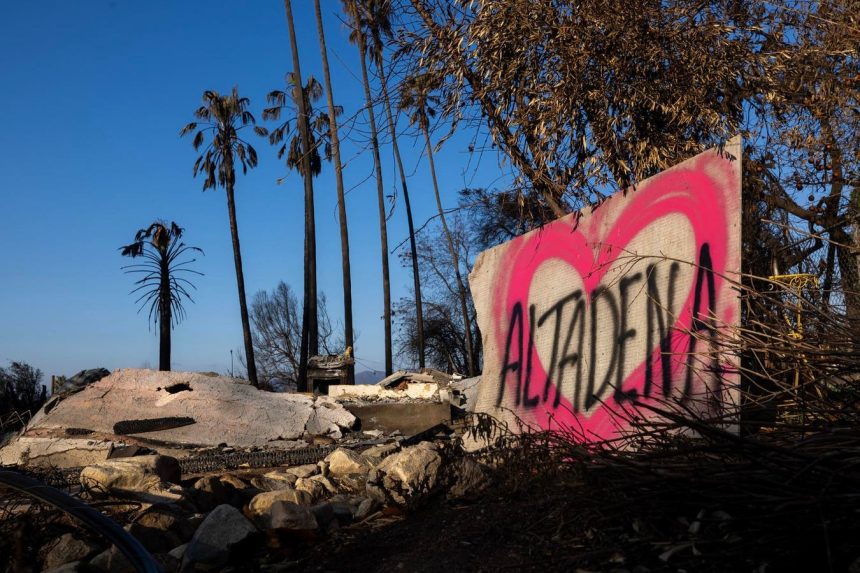The Los Angeles region faced a devastating wave of wildfires in January 2024, with the Palisades and Eaton Fires becoming two of the most destructive in California’s history. The Palisades Fire, originating in the affluent Pacific Palisades neighborhood on January 7th, scorched over 23,000 acres, prompting the evacuation of approximately 30,000 residents. Concurrently, the Eaton Fire erupted near the San Gabriel Mountains, rapidly consuming nearly 14,000 acres and forcing evacuations in Altadena, Pasadena, and Sierra Madre. While both fires neared full containment by the end of January, the devastation left behind was extensive, prompting estimates of damages in the billions of dollars. The Hughes Fire, another significant blaze north of Santa Clarita, also reached full containment after burning over 10,000 acres.
The fires’ rapid spread was fueled by a combination of extreme weather conditions, including strong Santa Ana winds, prolonged drought, and low humidity. These “devil winds,” reaching gusts of up to 100 mph, created an extremely dangerous environment conducive to rapid fire growth. The dry conditions, exacerbated by an underwhelming amount of rainfall in the preceding months, further primed the region for disaster. The situation was so dire that the National Weather Service issued “particularly dangerous situation” red flag warnings, highlighting the extreme fire risk. These factors converged to create a perfect storm for the wildfires, which quickly overwhelmed resources and resulted in widespread destruction.
The human cost of the fires was tragically high, with 27 confirmed fatalities and numerous individuals reported missing. The fires claimed lives in both the Palisades and Eaton Fire zones, leaving communities grappling with immense loss. Beyond the immediate casualties, the fires forced widespread evacuations, disrupting the lives of hundreds of thousands of residents. Homes and businesses were destroyed, leaving many displaced and facing the daunting task of rebuilding. The fires also severely impacted air quality, prompting health warnings and school closures. The scale of the destruction spurred local, state, and federal agencies to mobilize resources to aid in the recovery effort.
The economic toll of the fires was also substantial, with early estimates projecting damages in the tens of billions of dollars. These figures, which included insured and uninsured losses, positioned the fires among the costliest in US history. The extensive damage to residential and commercial properties resulted in significant financial burdens for individuals, businesses, and insurance companies. The fires disrupted local economies, prompting closures of businesses, schools, and even the relocation of a major sporting event – an NFL playoff game. The long-term economic consequences of the fires are expected to be significant, requiring substantial investment in recovery and rebuilding.
The response to the fires involved a massive mobilization of resources, including firefighters, emergency personnel, and the National Guard. The extreme conditions hampered firefighting efforts, with strong winds grounding air operations and creating hazardous conditions for ground crews. The federal government, under President Biden, approved a major disaster declaration, providing financial assistance for disaster relief and recovery. Local and state officials also implemented measures to address the crisis, including evacuation orders, curfews, and investigations into the causes of the fires and the response efforts. The disaster highlighted the challenges of managing large-scale wildfires in densely populated areas, prompting calls for improved preparedness and mitigation strategies.
Beyond the immediate response, the fires sparked discussions about the underlying factors that contributed to the disaster, including climate change, land management practices, and urban development in high-risk areas. The severity of the fires underscored the need for long-term solutions to address the increasing threat of wildfires in California and other regions facing similar challenges. The recovery process will require not only rebuilding homes and businesses but also reassessing land use policies, investing in fire prevention measures, and addressing the broader issue of climate change to mitigate the risk of future disasters. The fires served as a stark reminder of the devastating consequences of extreme weather events and the urgent need for proactive measures to protect communities and ecosystems.



